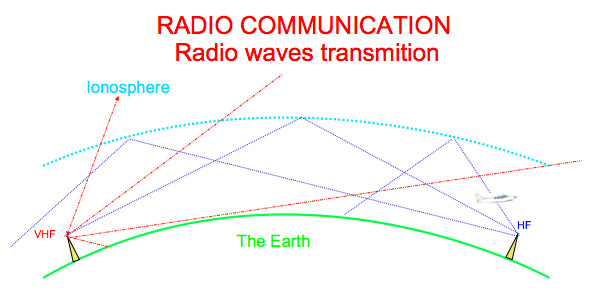Radio Signals
The ranges of the various frequency bands that are used in aviation (and for that matter, all radio communications) are largely dependent on the frequency. As a general rule, the higher the frequency, the shorter the effective range.
Surrounding the Earth are several layers of the ionosphere which reflect a radio beam back to Earth at considerable distance from the point of transmission. The thickness and height of the layers change, so too does the distance that the reflected signal is heard from the transmitter. The nighttime arrangement of the layers allows reception at a much greater distance than would be the case during the day. You can prove this by using a conventional AM/FM radio to tune into various commercial AM radio stations. At night, you will be able to clearly hear stations many hundreds and sometimes thousands of miles away, while during the day, those same stations cannot be received.
VHF (Very High Frequency) is not capable of being reflected off the ionosphere, and so its range is limited to a direct path, or what is referred to as line-of-sight reception.
HF (High Frequency) on the other hand is reflected and so it has a range of well over the horizon. As well as its ability to bounce off the ionosphere, this lower frequency also tends to follow the curved surface of the earth, something that VHF cannot do.
CASA Aircraft Radio Operation Certificate of Proficiency Radio communication course Aircraft communication course exam test qualification. Aircraft qualification Aircraft test exam communication Aircraft communication CASA course FROL.

